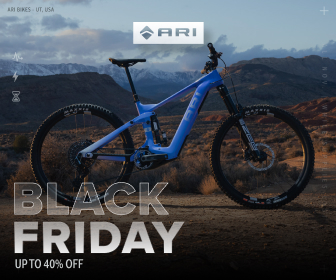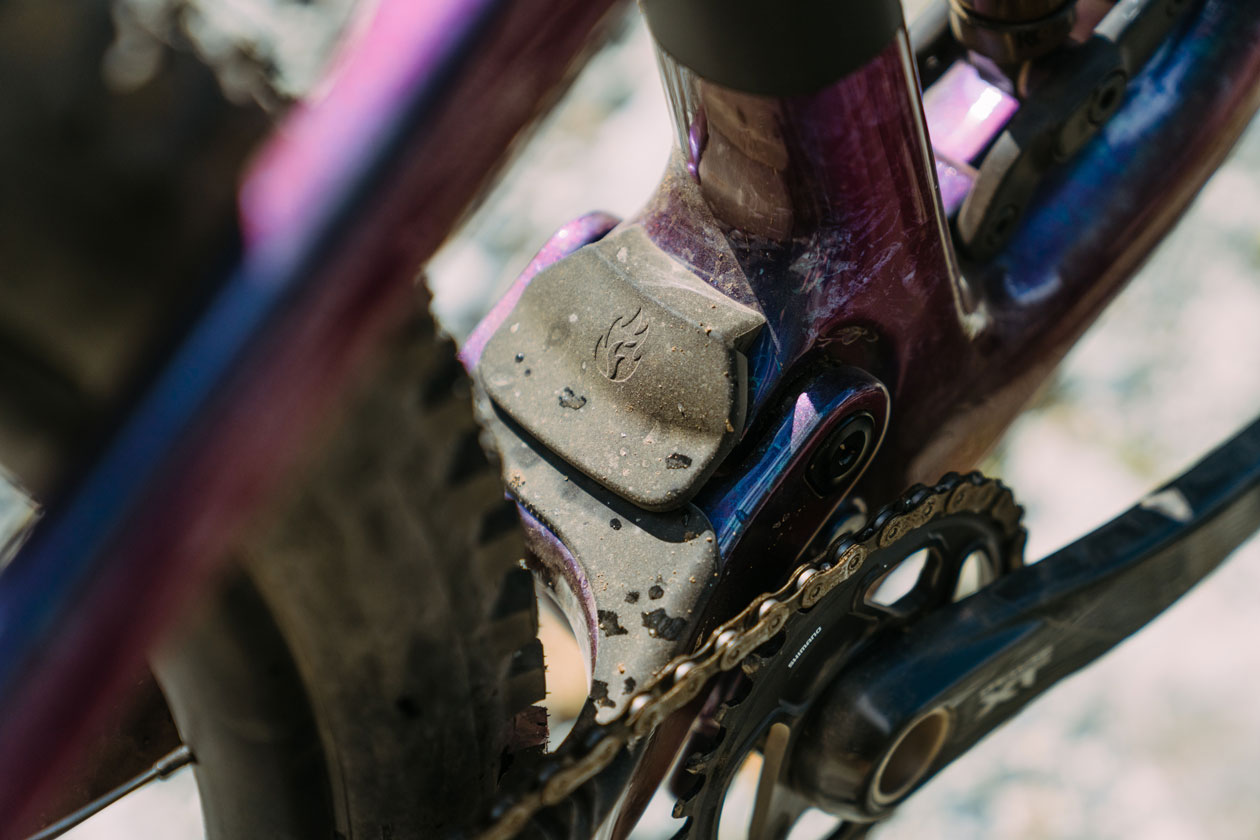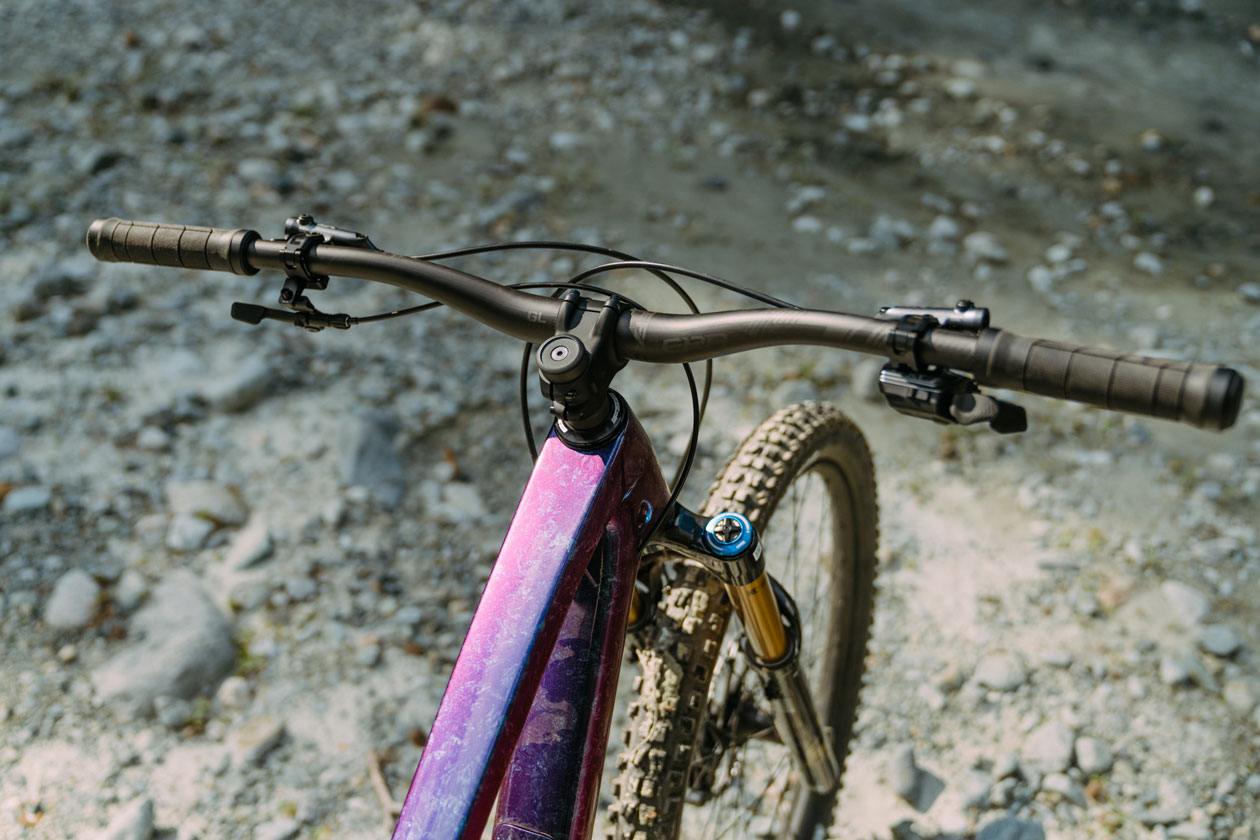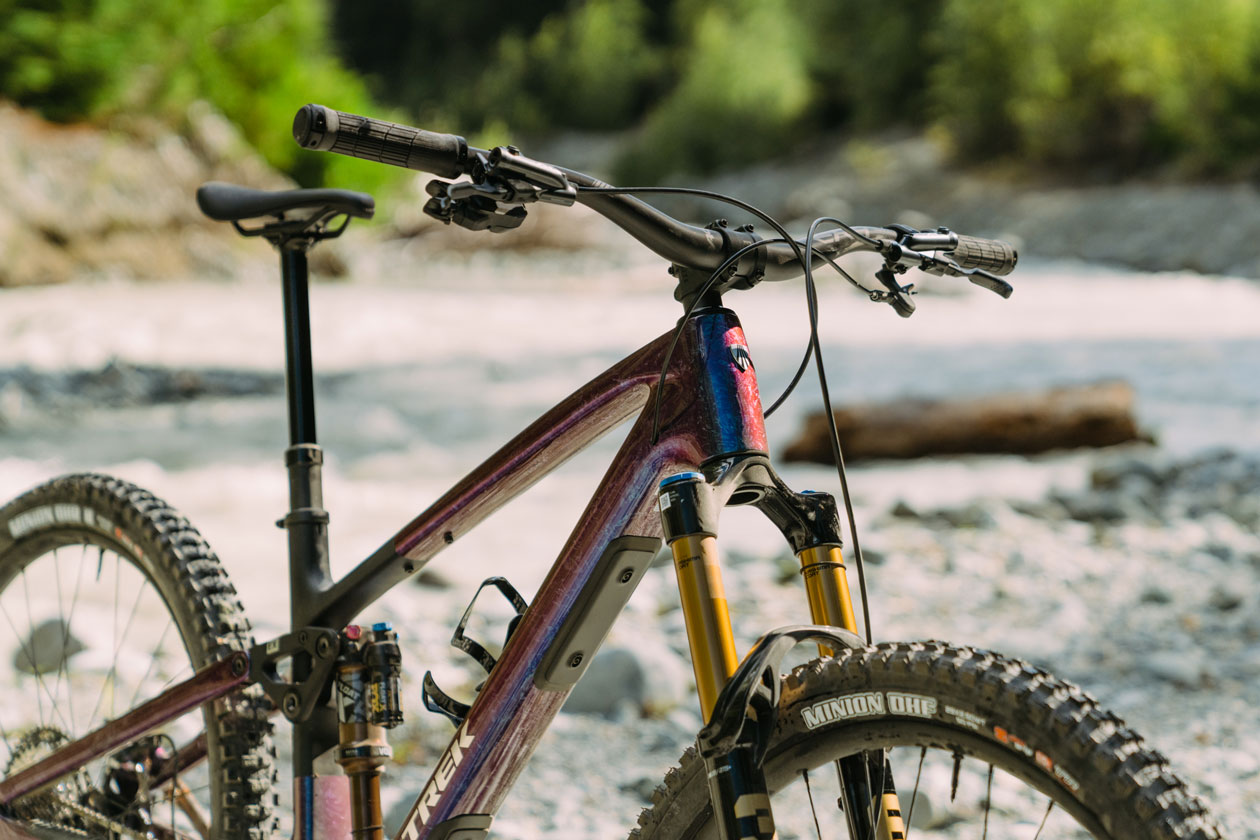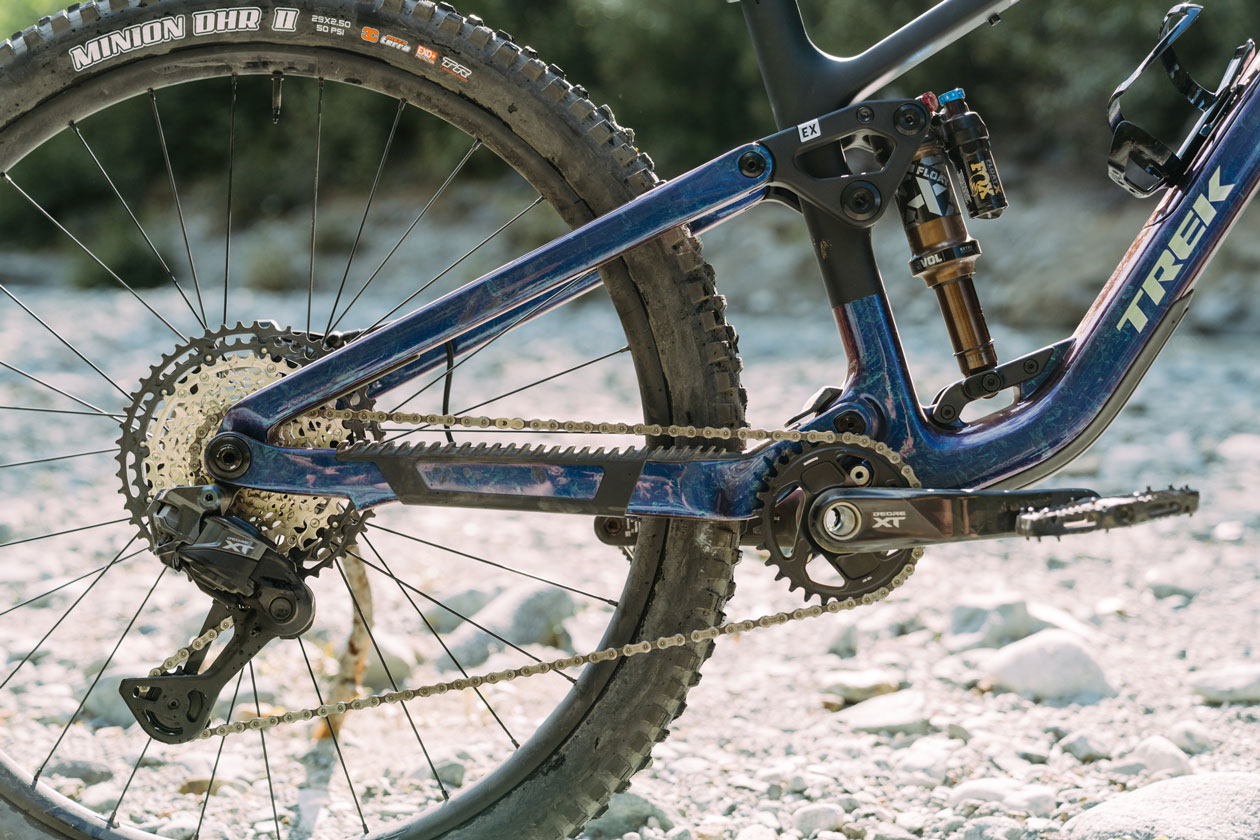NO LONGER A LIGHTWEIGHT TRAIL BIKE
Trek designed the Fuel Gen 7 to provide the perfect tool for everything from backcountry epics through to park laps. Using a selection of rocker links and lower shock mounts combined with different shock stroke lengths, the same mainframe can take a variety of forms to suit different rider preferences. Adding even more tinkering to the equation, riders can opt to simply select different stroke shocks in some of the different configurations to offer even more possible travel and performance options. Think of it like half-steps between each major linkage change. It’s quite awesome and can be a puzzler’s dream.
Trek didn’t just add a flip chip and call it good, instead choosing to do it “properly” by adapting geometry and kinematics to each of the three setups on offer. As you might expect, there’s still Trek’s ABP suspension system to provide the kinematics that Trek considers optimal.

FUEL EX
The Fuel EX Gen 7 stays similar in intentions to the Gen 6, with 145mm rear wheel travel and a pair of 29” wheels. The travel received a small increase to boost capability, and the Anti Squat was increased to offer more pedaling efficiency. With its 150mm fork, the Fuel in EX guise is intended to be a solid all-round trail to all mountain machine.

FUEL MX
Moving up in aggression and capability to the Fuel MX, there’s a mixed-wheel setup with 150mm rear and 160mm front travel. To pair with the more aggressive and playful intentions of this setup, Trek delivered a leverage curve with more pop to encourage hitting all the side hits you can find.
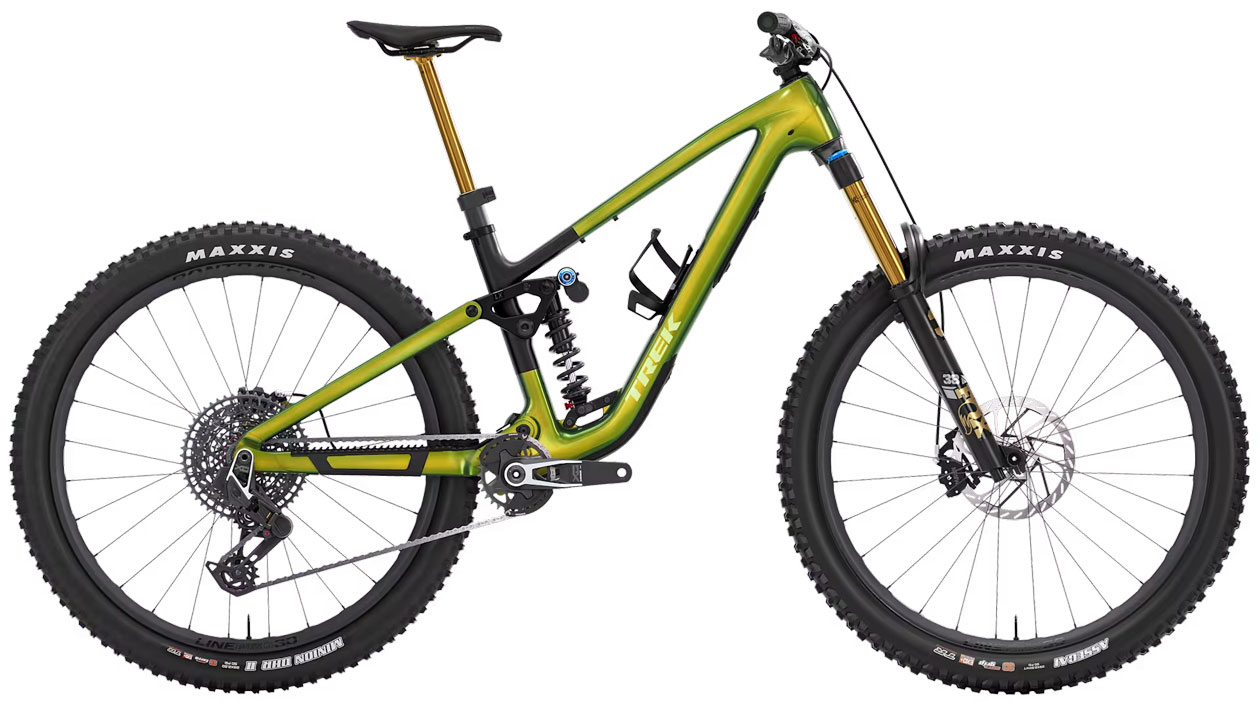
FUEL LX
The LX is the Fuel’s long-travel, bump-eating guise. Designed to offer enduro-ready big hit capability with a progressive leverage ratio that’s ideal for running a coil shock, the 29” wheels are given 160mm rear and 170mm front travel to soak up the rough and rowdy terrain.
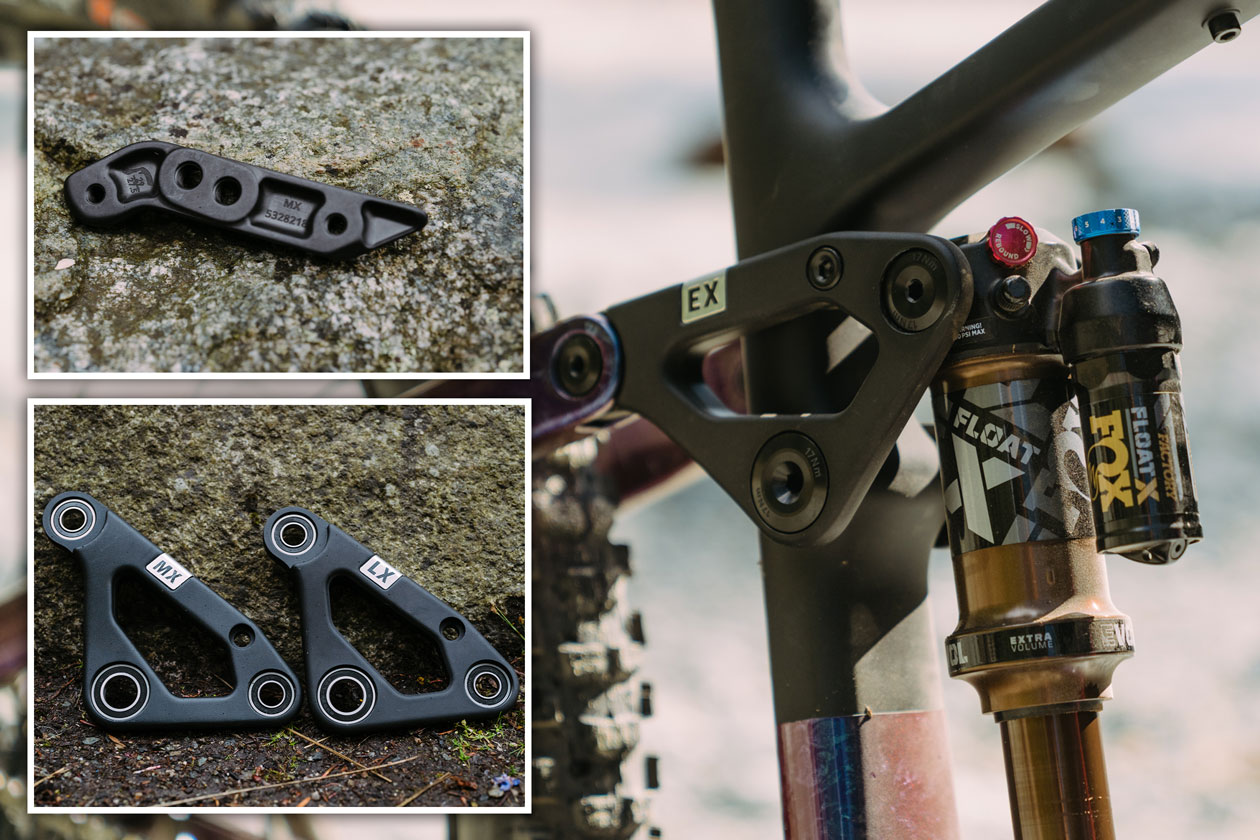
BUILT YOUR WAY – TREK PROJECT ONE
Trek’s Project One is available on Fuel 9, 9.8 and 9.9 builds, letting you set up your Fuel EX, Fuel MX or Fuel LX to your exacting specifications.
With Project One, riders can configure everything from the frame paint through to individual components, ensuring they get their dream bike out of the box. We love to see schemes like this, where a rider is able to put their own personal touch on a bike from the get-go and avoid spending money on components they don’t want to ride.
FEATURES TO FUEL THE SHRED
- Long Dropper insertion – Trek worked on the frame configuration to provide plentiful seatpost insertion, letting most riders on size Medium and above run at least a 200mm dropper.
- Updated Geometry – The new Fuel frame has taller Stack heights on larger frame sizes to improve weight balance on steeper terrain for improved descending confidence.
- Better Weight Distribution – With size-specific chainstays, riders on smaller sizes are given a more agile ride while taller riders retain better balance between the wheels for improved stability and control.
- Tune Your Leverage – With the leverage rate flip chip in the lower shock mount, riders can tweak the leverage curve to suit their handling preferences.
STASH THE ESSENTIALS
In-frame storage features on both the Alloy and Carbon Trek Fuel frames, with a robust door to ensure rattle-free descending and easy access to the included storage bag inside.
KEEPING IT QUIET
A quieter ride is provided with engineered chainstay and downtube guards, keeping noise to a minimum while offering robust protection. The internal cable routing is guided on alloy and carbon frames to make maintenance easier and reduce the likelihood of rattling.
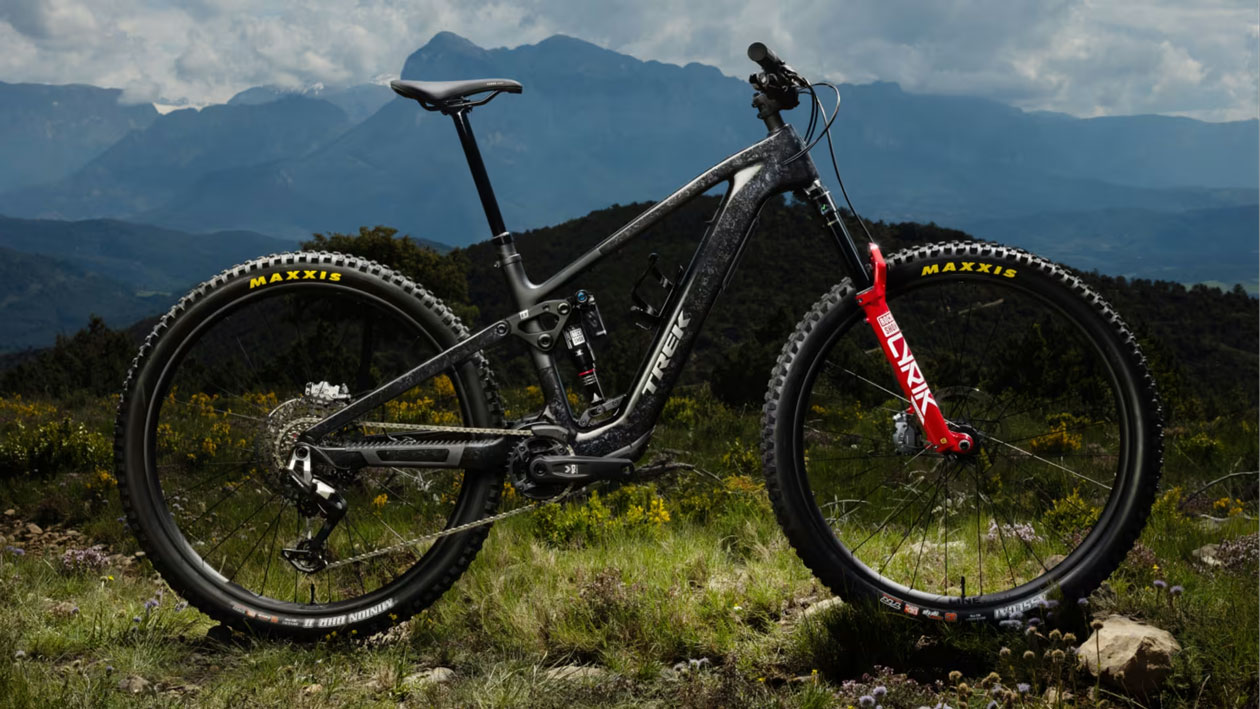
FUEL + ASSISTANCE
The new Fuel is also offered as a mid-power eBike, with the TQ HPR60-equipped Fuel+. Packing all of the same modularity and adjustability as its analogue counterpart, this lightweight eBike offers an assisted version of the Gen 7 Trek Fuel for riders looking to take the sting off the climbs and extend their ride.
TREK FUEL GEN 7 BUILD OFFERINGS
Depending on the spec level selected, the Trek Fuel Gen 7 is offered in either an Alpha Platinum aluminum frame or the OCLV Mountain Carbon fiber on the 9.8 spec and above to reduce weight.
Beginning from the framesets, the Fuel EX alloy frame retails for $1,999 while the carbon jumps up to $2,999. Complete builds begin at the Fuel EX 5 at $2,899, and top out at the high-spec X0 AXS-equipped 9.9 for $8,499.

THE WOLF’S FIRST IMPRESSION
As is typical in our Dissected features, we have not ridden the new Trek Fuel EX enough to constitute a full review, but we’ve logged a handful of rides to obtain a solid first impression of its performance and character on the trail. This testing was primarily conducted within the Whistler Bike Park, where the EX guise would not have been our first choice, but even so we’ve gained valuable insights.
The Maxxis tire selection was great to see, despite the EXO+ tires not being our preference for bikepark use, even on the flowier runs. We found ourselves needing to inflate them higher to match the bike’s impressive confidence and suspension capability on the trails, limiting traction.
The 145mm rear travel and 150mm fork admirably handled rough and chunky terrain, even when chasing R-Dog, who was on a more aggressive MX build. Despite his longer travel fork, smaller rear wheel, and enduro casing tires, I was able to push the Fuel EX hard and almost keep pace. I was particularly impressed with its comfort on “Fade to Black,” a substantial trail to ride on a trail bike, which speaks volumes about the bike’s immediate comfort and confidence provided.
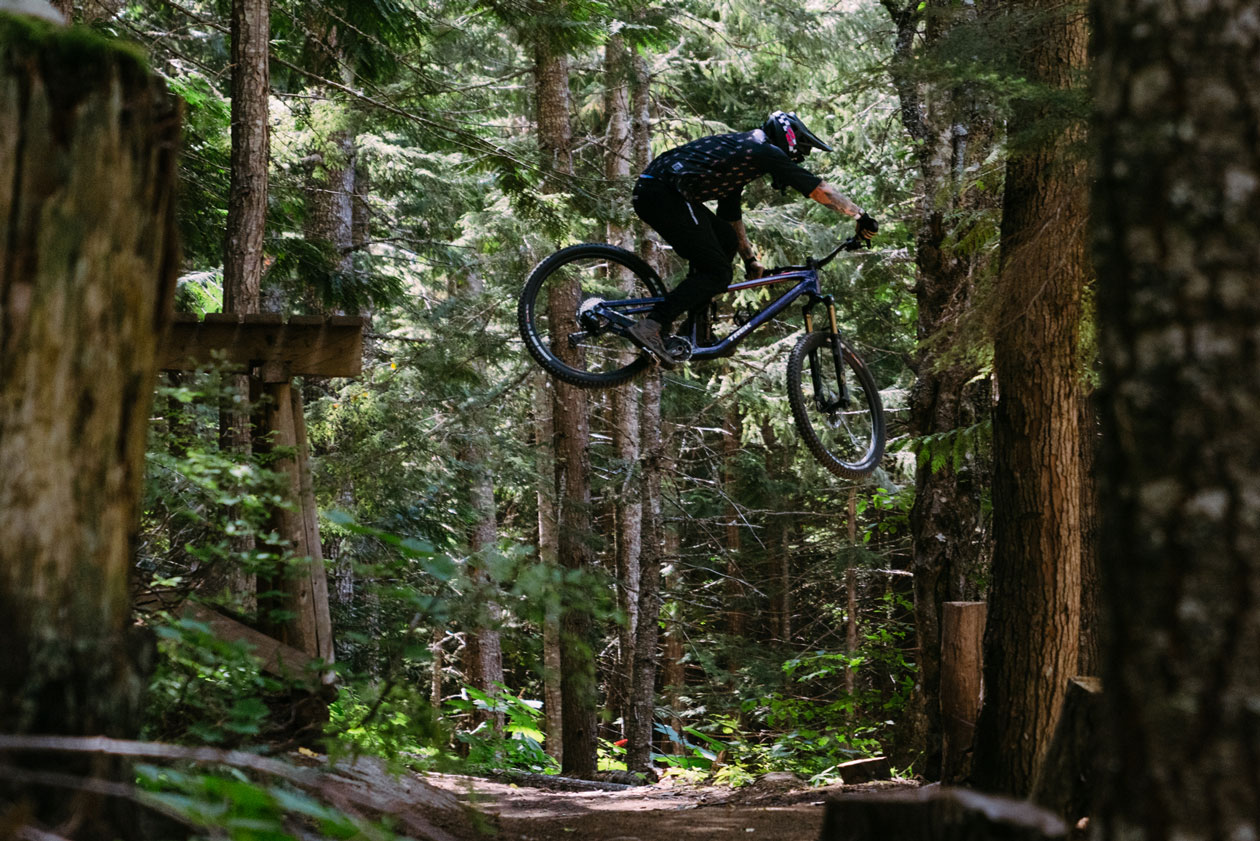
Climbing performance was commendable for the uphill I’ve done on it so far. I rarely felt the need for the climb switch on shorter, punchier ascents, and the Fuel EX offered a comfortable and efficient feel.
The standout feature was on the downhills, with the rear suspension’s compliance, suppleness, and smoothness maintaining performance even under hard riding. I’m keen to see its potential with burlier tires and increased travel through the shock stroke length adjustments.
As a downhill-biased rider, I can absolutely see merit and areas where the Fuel EX build would absolutely excel. For extensive backcountry or pedaling-intensive rides as well as the flatter XC-type trails near Bend, Oregon, the EX is about perfect for me. However if I were to live in an area with a bit gnarlier trails, more vert and my preferred style of terrain, the LX or MX guises would likely be the direction I’d lean. Or perhaps a long-shocked EX with a burlier fork!
We’ve also been putting in some big miles on the Fuel + in LX setup and at this point in time, we can say we really really like it. It descended true black and double black diamond trails in Whistler exceptionally well. We’ve even ridden it on some of our hometown DH trails at Mt. Bachelor and are very impressed with the suppleness of the rear end and how well it handles terrain. It’s a burly build for some, but, it’s exactly the bike we’d want for this category of lightweight eMTB.
This experience of riding both the new Gen 7 Trek Fuel EX and the Trek Fuel LX validated that one front triangle can very distinct riding experiences, and we’re looking forward to riding the Fuel and Fuel+ more in the different EX, MX and LX guises for their long term reviews.
The adaptability and adjustability of the Fuel, in terms of travel and category blending, make it a very exciting bike. While some bikes may offer better specs at a lower price, the peace of mind that comes with a brand offering dealer support, potential free maintenance, and warranty assistance from a robust dealer network is invaluable, and the Fuel seems to provide the performance thus far to back it up.



